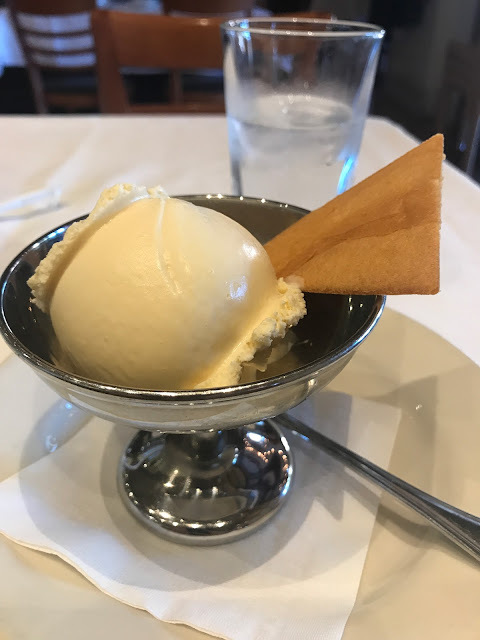Il Fornaio
I've been visiting Walnut Creek for a long time and I've always been intrigued by a restaurant sitting by the corner of North Main St and Mount Diablo Blvd: Il Fornaio. The opportunity to try it out finally came when I ended up famished after a barre class. So, still in athletic attire, I entered the restaurant... and quickly realised how underdressed I was in a lunch crowd composed of suits.
But once I looked at the menu, I forgot that I was surrounded by well-dressed corporate types. As much as I love carpaccio, I had to skip it because it's raw beef. So I started my meal with a minestrone instead, followed it with roasted salmon on a bed of mixed vegetables, and finished it with a scoop of vanilla gelato.
The salmon was cooked perfectly. It was seared enough to lend a caramelised taste to the otherwise fatty fish. And underneath the surface, the salmon was cooked just enough to retain its inner translucency and a slightly pink colour. The veggies provided a crunchy counterpoint to the tender meat.
The gelato, on the other hand, was so delicious. I've been eating ice cream a lot these days, suspecting that I don't have enough calcium in my system. So the gelato fix gave me that dose of calcium (and sweets) for the day; no need to make a boba tea stop.
After solving the mystery that is Il Fornaio, I can say that it's added to my list of restaurants to bring my family to on special occasions. And the wee one is developing a taste of fine dining even before he's born!
(Which means that he and his dad will be eating gourmet food when I take over the kitchen)



Comments
Post a Comment
Thank you for dropping by!
Before moving on, please share your thoughts or comments about the post. :)
Thanks again!